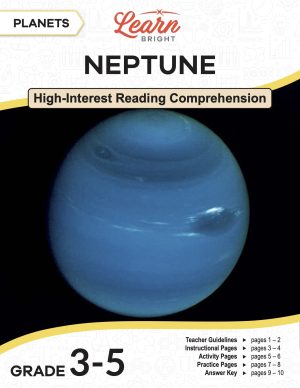Description
What our Basic Graphs lesson plan includes
Lesson Objectives and Overview: Basic Graphs introduces students to the basics of line and bar graphs. This lesson demonstrates with practical application how to read, analyze, and create a basic line graph and bar graph. Students come to understand the purpose of graphs as a way to depict information using limited words and provide hands-on opportunities for students to develop their own graphs. At the end of the lesson, students will be able to define, read, analyze, and create a basic line graph and bar graph. This lesson is for students in 1st grade, 2nd grade, and 3rd grade.
Classroom Procedure
Every lesson plan provides you with a classroom procedure page that outlines a step-by-step guide to follow. You do not have to follow the guide exactly. The guide helps you organize the lesson and details when to hand out worksheets. It also lists information in the blue box that you might find useful. You will find the lesson objectives, state standards, and number of class sessions the lesson should take to complete in this area. In addition, it describes the supplies you will need as well as what and how you need to prepare beforehand. The supplies you will need for this lesson include construction paper, drawing paper, scissors, glue, colored pencils, and the handouts.
Options for Lesson
Included with this lesson is an “Options for Lesson” section that lists a number of suggestions for activities to add to the lesson or substitutions for the ones already in the lesson. One optional adjustment to the lesson activity is to have your students create the graphs using only colored pencils. You can also add other data for students to use during the activity or have them create a pie chart as well. For the homework assignment, you can assign students two questions to use instead of having them create the questions themselves. Students can also ask their classmates the homework questions instead of their family or friends.
Teacher Notes
The teacher notes page includes a paragraph with additional guidelines and things to think about as you begin to plan your lesson. This page also includes lines that you can use to add your own notes as you’re preparing for this lesson.
BASIC GRAPHS LESSON PLAN CONTENT PAGES
Information
The Basic Graphs lesson plan includes two pages of content. People learn new things every day, at home, at school, or even on their own. We have access to information everywhere. Someone on TV might tell you the weather, a video game might show you your score, and your report card tells you your grades. It would be very hard to learn all of this information from words alone. This is why we use charts, pictures, and graphs. For example, the weather report might simply show you numbers and pictures that represent the temperature and whether it’s sunny or raining.
Bar Graphs
We have many different kinds of graphs, which are diagrams of values. It’s important to learn how to read and create graphs. We sometimes also call graphs charts. Bar graphs are the simplest graphs we have. The lesson includes an example bar graph that shows students’ favorite colors. It lists the number of students on the left side in intervals of ten. The bottom of the graph shows categories (in this example, colors). The graph also includes a title. The bars in this example go up and down, but they can also go from left to right.
Line Graphs
Line graphs are another type of graph. We use them to show information over a certain period of time. The example in the lesson show’s a boy named Noah’s growth over time. It shows that when he was 5, he was about 36 inches tall, and when he was 9, he was about 49 inches tall. This graph also includes a title, intervals, and other labels.
Pictographs
Pictographs use pictures to represent information. The example graph shows the favorite field trip for students. Each smiley face equals five students, so we count by fives. 20 students liked going to the zoo the most, so the chart shows four smiley faces for that category. You can use any pictures for a pictograph, not just smiley faces! It can be fund to make pictographs.
Pie Charts
Pie charts are another kind of graph. These graphs look like circles or pies cut into different sized pieces which show the information. We only use pie charts to show percentages. The example pie chart shows the percentage of people who own different kinds of pets. We can immediately see that the most people own dogs, because that’s the biggest piece of the pie chart. Pie charts do not always show numbers. In this case, we can visually compare the information.
These are not the only kinds of charts and graphs. You will likely encounter other bar and line graphs, pictographs, pie charts, and more. However, all graphs have to include a title. When you come across a graph, you should first read the title and identify the labels of the graph.
The easiest way to learn more about graphs is to make your own! You’ll just need a rule, some pencils, paper, and the information you want to share.
BASIC GRAPHS LESSON PLAN WORKSHEETS
The Basic Graphs lesson plan includes three worksheets: an activity worksheet, a practice worksheet, and a homework assignment. You can refer to the guide on the classroom procedure page to determine when to hand out each worksheet.
THREE GRAPHS ACTIVITY WORKSHEET
Students will work with a partner to complete the activity worksheet. Each pair will create three graphs using the information given, one line graph, one pictograph, and one bar graph. They will cut construction paper to create the bars or lines. For each graph, they will include a title, numbers, and other parts of a graph. They will share their graphs with the class once they’re complete.
Students may work alone or in larger groups for the activity.
ANSWERING QUESTIONS PRACTICE WORKSHEET
The practice worksheet asks students to look at three different graphs and answer questions about each.
BASIC GRAPHS HOMEWORK ASSIGNMENT
For the homework assignment, students will create two different kinds of graphs by asking their friends or family two questions. They can create their own questions, but they must ask at least ten people for each question.
Worksheet Answer Keys
This lesson plan includes answer keys for the practice worksheet and the homework assignment. If you choose to administer the lesson pages to your students via PDF, you will need to save a new file that omits these pages. Otherwise, you can simply print out the applicable pages and keep these as reference for yourself when grading assignments.









